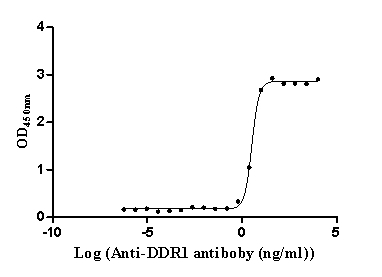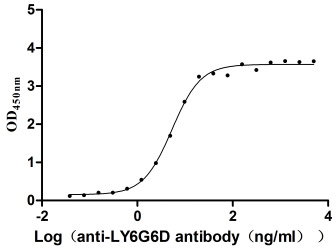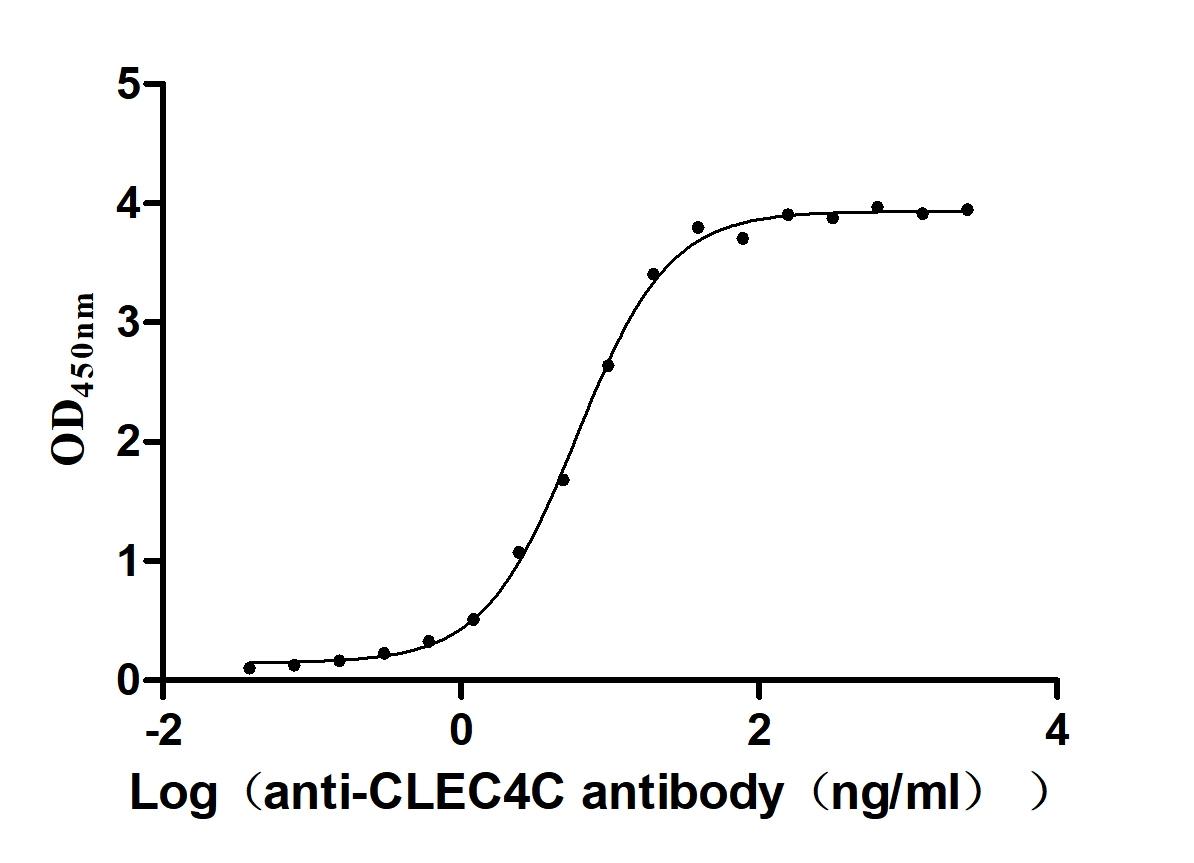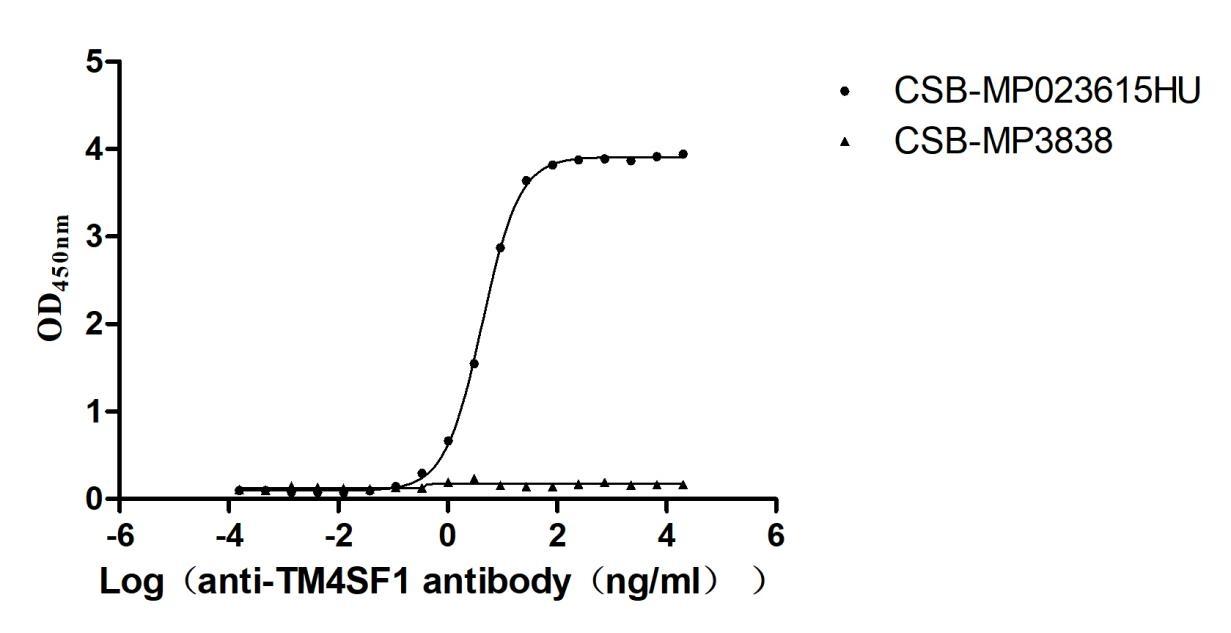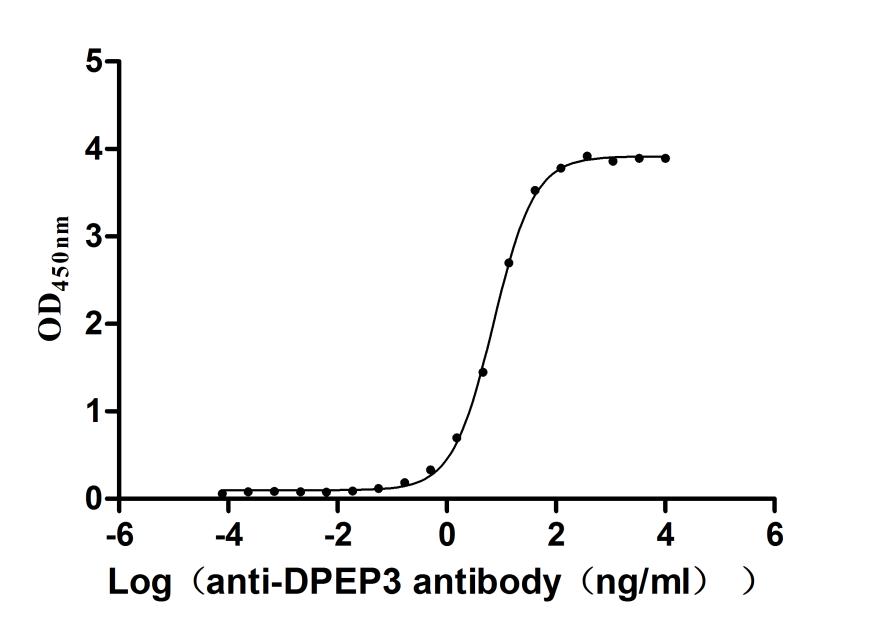Recombinant Mouse N (G),N (G)-dimethylarginine dimethylaminohydrolase 1 (Ddah1)
-
中文名称:Recombinant Mouse N(G),N(G)-dimethylarginine dimethylaminohydrolase 1(Ddah1)
-
货号:CSB-YP871913MO
-
规格:
-
来源:Yeast
-
其他:
-
中文名称:Recombinant Mouse N(G),N(G)-dimethylarginine dimethylaminohydrolase 1(Ddah1)
-
货号:CSB-EP871913MO
-
规格:
-
来源:E.coli
-
其他:
-
中文名称:Recombinant Mouse N(G),N(G)-dimethylarginine dimethylaminohydrolase 1(Ddah1)
-
货号:CSB-EP871913MO-B
-
规格:
-
来源:E.coli
-
共轭:Avi-tag Biotinylated
E. coli biotin ligase (BirA) is highly specific in covalently attaching biotin to the 15 amino acid AviTag peptide. This recombinant protein was biotinylated in vivo by AviTag-BirA technology, which method is BriA catalyzes amide linkage between the biotin and the specific lysine of the AviTag.
-
其他:
-
中文名称:Recombinant Mouse N(G),N(G)-dimethylarginine dimethylaminohydrolase 1(Ddah1)
-
货号:CSB-BP871913MO
-
规格:
-
来源:Baculovirus
-
其他:
-
中文名称:Recombinant Mouse N(G),N(G)-dimethylarginine dimethylaminohydrolase 1(Ddah1)
-
货号:CSB-MP871913MO
-
规格:
-
来源:Mammalian cell
-
其他:
产品详情
-
纯度:>85% (SDS-PAGE)
-
基因名:Ddah1
-
Uniprot No.:
-
别名:Ddah1N(G),N(G)-dimethylarginine dimethylaminohydrolase 1; DDAH-1; Dimethylarginine dimethylaminohydrolase 1; EC 3.5.3.18; DDAHI; Dimethylargininase-1
-
种属:Mus musculus (Mouse)
-
蛋白长度:Full Length of Mature Protein
-
表达区域:2-285
-
氨基酸序列AGLGHPSAF GRATHAVVRA PPESLCRHAL RRSQGEEVDF ARAERQHELY VGVLGSKLGL QVVQLPADES LPDCVFVEDV AVVCEETALI TRPGAPSRRK EVDMMKEALE KLQLNIVEMK DENATLDGGD VLFTGREFFV GLSKRTNQRG AEILADTFKD YAVSTVPVAD SLHLKSFCSM AGPNLIAIGS SESAQKALKI MQQMSDHRYD KLTVPDDMAA NCIYLNIPSK GHVLLHRTPE EYPESAKVYE KLKDHLLIPV SNSEMEKVDG LLTCCSVFIN KKIDS
-
蛋白标签:Tag type will be determined during the manufacturing process.
The tag type will be determined during production process. If you have specified tag type, please tell us and we will develop the specified tag preferentially. -
产品提供形式:Lyophilized powder
Note: We will preferentially ship the format that we have in stock, however, if you have any special requirement for the format, please remark your requirement when placing the order, we will prepare according to your demand. -
复溶:We recommend that this vial be briefly centrifuged prior to opening to bring the contents to the bottom. Please reconstitute protein in deionized sterile water to a concentration of 0.1-1.0 mg/mL.We recommend to add 5-50% of glycerol (final concentration) and aliquot for long-term storage at -20℃/-80℃. Our default final concentration of glycerol is 50%. Customers could use it as reference.
-
储存条件:Store at -20°C/-80°C upon receipt, aliquoting is necessary for mutiple use. Avoid repeated freeze-thaw cycles.
-
保质期:The shelf life is related to many factors, storage state, buffer ingredients, storage temperature and the stability of the protein itself.
Generally, the shelf life of liquid form is 6 months at -20°C/-80°C. The shelf life of lyophilized form is 12 months at -20°C/-80°C. -
货期:Delivery time may differ from different purchasing way or location, please kindly consult your local distributors for specific delivery time.Note: All of our proteins are default shipped with normal blue ice packs, if you request to ship with dry ice, please communicate with us in advance and extra fees will be charged.
-
注意事项:Repeated freezing and thawing is not recommended. Store working aliquots at 4°C for up to one week.
-
Datasheet :Please contact us to get it.
靶点详情
-
功能:Hydrolyzes N(G),N(G)-dimethyl-L-arginine (ADMA) and N(G)-monomethyl-L-arginine (MMA) which act as inhibitors of NOS. Has therefore a role in the regulation of nitric oxide generation.
-
基因功能参考文献:
- DDAH1 in cardiomyocytes plays a vital role in attenuating left ventricular remodeling after acute myocardial infarction by regulating intracellular ROS levels and apoptosis sensitivity via a SOD2-dependent pathway. PMID: 29892894
- Cardiomyocyte DDAH1 activity is dispensable for cardiac function under basal conditions, but plays an important role in attenuating cardiac hypertrophy and ventricular remodeling under stress conditions, possibly through locally confined regulation of subcellular ADMA and NO signaling. PMID: 28819685
- the ADMA/DDAH1 pathway has a marked effect on hepatic lipogenesis and steatosis induced by HFD feeding. Our findings suggest that strategies to increase DDAH1 activity in hepatocytes may provide a novel approach to attenuate NAFLD development. PMID: 27565538
- A time-dependent decrease in serum and tissue ADMA and increase in mRNA expression of DDAH-1 and PRMT-1 as well as higher rates of mRNA expression of CAT-1 and lower rates of CAT-2A and CAT-2B were found after 8-week MCD diet. PMID: 27357826
- our results suggest that DDAH1 not only acts as an enzyme degrading ADMA but also controls cellular oxidative stress and apoptosis via a miR-21-dependent pathway. PMID: 26806551
- In mild CKD, dysregulation of the ADMA/DDAH pathway in adipose tissue triggers lipodystrophy-like phenotype changes, including ectopic fat depositions. PMID: 26516203
- transgenic mice display attenuated cigarette smoke-induced lung inflammation PMID: 25913572
- Endothelial deletion of DDAH1 profoundly impairs the angiogenic capacity of endothelial cells. PMID: 25910799
- Our findings suggest that decreased expression of DDAH1 and DDAH2 in the lungs may contribute to allergic asthma and overexpression of DDAH1 attenuates allergen-induced airway inflammation through modulation of Th2 responses. PMID: 24465497
- Overexpression of the ADMA degrading enzyme, DDAH1, did not ameliorate atherosclerosis in ApoE-deficient subtotally nephrectomized mice. PMID: 24690995
- DDAH1 deficiency attenuates endothelial cell cycle progression and angiogenesis. PMID: 24260221
- DDAH1 overexpression selectively decreased the sustained phase of hypoxic pulmonary vasoconstriction, partly via activation of the NO-cGMP pathway. PMID: 23642043
- Pharmacological and genetic reduction of DDAH1 activity is protective against the vascular changes observed during endotoxic shock. PMID: 22995517
- Data show that DDAH inhibition reduces fibroblast-induced collagen deposition in an ADMA-independent manner and reduces abnormal epithelial proliferation in an ADMA-dependent manner. PMID: 21677199
- Indicate that DDAH1 is required for metabolizing asymmetrical dimethylarginine and N(omega)-monomethyl-L-arginine. PMID: 21493890
- DDAH1 exerts a unique role in activating Akt that affects endothelial function independently of degrading endogenous nitirc oxide synthase inhibitors. PMID: 21212404
- overexpression of DDAH1 reduces plaque formation in ApoE(-/-) mice by lowering ADMA PMID: 20348244
- Dimethylarginine dimethylaminohydrolase-1 transgenic mice are not protected from ischemic stroke PMID: 19809508
- Overexpression of DDAH-1 increases basal levels of vascular NO and protects against ADMA-induced endothelial dysfunction in the cerebral circulation. PMID: 18063827
- Report tissue-specific downregulation of DDAH1 in hyperhomocysteinemia. PMID: 18567702
- Results show that asymmetric methylarginine increases pulmonary endothelial permeability, and that its effects on permeability, Rac1 activation and VASP phosphorylation are prevented by overexpression of active DDAHI and DDAHII. PMID: 18923147
- DDAH1 is highly expressed in vascular endothelium and that endothelial DDAH1 plays an important role in regulating blood pressure PMID: 19917889
显示更多
收起更多
-
蛋白家族:DDAH family
-
组织特异性:Detected in skeletal muscle, lung, heart and brain (at protein level). Detected in liver, kidney and lung.
-
数据库链接:
Most popular with customers
-
Recombinant Human Secreted and transmembrane protein 1 (SECTM1), partial (Active)
Express system: Mammalian cell
Species: Homo sapiens (Human)
-
Recombinant Human Tumor necrosis factor ligand superfamily member 9 (TNFSF9), partial (Active)
Express system: Mammalian cell
Species: Homo sapiens (Human)
-
Recombinant Human Epithelial discoidin domain-containing receptor 1 (DDR1), partial (Active)
Express system: Mammalian cell
Species: Homo sapiens (Human)
-
Recombinant Macaca fascicularis lymphocyte antigen 6 family member G6D (LY6G6D) (Active)
Express system: Yeast
Species: Macaca fascicularis (Crab-eating macaque) (Cynomolgus monkey)
-
Recombinant Macaca fascicularis C-type lectin domain family 4 member C(CLEC4C), partial (Active)
Express system: Mammalian cell
Species: Macaca fascicularis (Crab-eating macaque) (Cynomolgus monkey)
-
Recombinant Human Transmembrane 4 L6 family member 1(TM4SF1)-VLPs (Active)
Express system: Mammalian cell
Species: Homo sapiens (Human)
-
Recombinant Human Dipeptidase 3(DPEP3), partial (Active)
Express system: Mammalian cell
Species: Homo sapiens (Human)




